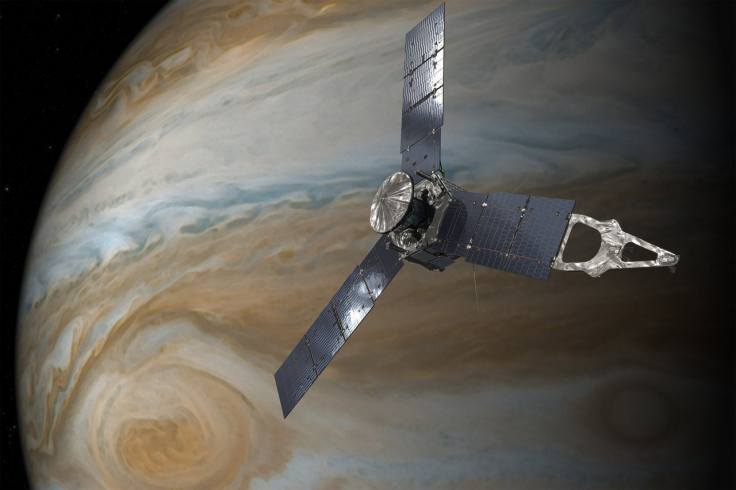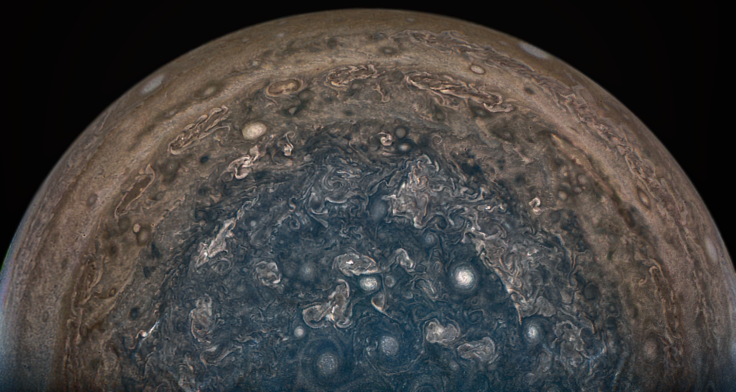NASA's Juno Preps For Fifth Jupiter Flyby, All Science Instruments To Be Switched On

NASA’s Juno spacecraft is being prepped for its fifth close flyby of Jupiter. The solar-powered spacecraft, at the time of its closest approach of the gas giant at 4:52 a.m. EDT Monday, will soar about 2,700 miles above the planet’s cloud tops.
All eight of Juno’s science instruments will remain switched on during the flyby, which comes almost two months after the previous one.
Read: Juno Snaps New Image Of Jupiter’s Great Red Spot
“This will be our fourth science pass — the fifth close flyby of Jupiter of the mission — and we are excited to see what new discoveries Juno will reveal,” Scott Bolton, principal investigator of Juno from the Southwest Research Institute in San Antonio, said in a statement released Saturday. “Every time we get near Jupiter’s cloud tops, we learn new insights that help us understand this amazing giant planet.”
Juno was launched in August 2011 and traversed nearly 2 billion miles of space to reach Jupiter. The primary goals of the $1.1 billion mission are to find out whether Jupiter has a solid core, how its atmosphere and magnetosphere formed, and whether there is water in the gas cloud shrouding the planet — information that may not only provide vital clues to how the planet formed and evolved, but also to how the solar system we live in came into existence.
Although the science instruments on board Juno collected data during the first close pass over Jupiter in August, revealing that the planet’s magnetic fields and aurora are bigger and more powerful than originally thought, they failed to do so during the second flyby in October, when the spacecraft unexpectedly went into a safe mode. However, Juno successfully completed its third and fourth flybys in December and February, respectively.

“Juno is providing spectacular results, and we are rewriting our ideas of how giant planets work,” Bolton said in a statement released last month.
Originally, the Juno mission plan called for reducing the spacecraft’s orbital period from 53 days to 14 days after two flybys. However, NASA announced last month that the spacecraft would remain in its current elliptical orbit for the rest of the mission, citing concerns over the safety of two helium check valves in Juno’s main engine (which malfunctioned slightly in October).
Read: NASA’s Juno To Stay In 53-Day Jupiter Orbit
“The orbital period does not affect the quality of the science collected by Juno on each flyby, since the altitude over Jupiter will be the same at the time of closest approach,” the space agency said at the time. “In fact, the longer orbit provides new opportunities that allow further exploration of the far reaches of space dominated by Jupiter’s magnetic field, increasing the value of Juno’s research.”
© Copyright IBTimes 2024. All rights reserved.





















